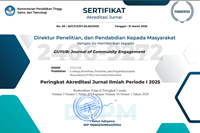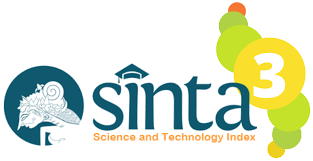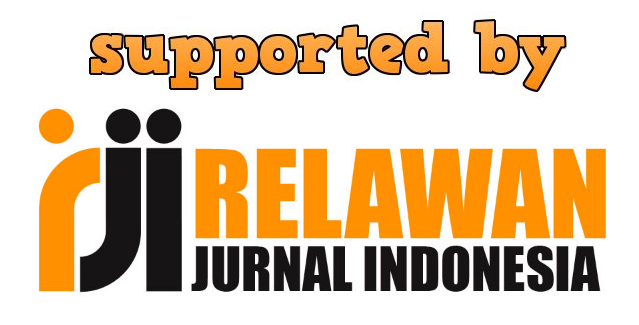Apsari, N. (2016) Teacher’s Way To Foster Critical Thinking In The Classroom (A Case Study of a Senior High School in Bandung). Journal of English and Education, 4(1), 51-72. Retrieved from https://ejournal.upi.edu/index.php/L-E/article/view/4620 [diunduh 2021 Nov.2]
Aufderheide, P. (1993). Media literacy. A report of the National Leadership Conference on Media Literacy. Washington, DC: Aspen Institute, Communications and Society Program
Billings S (2015) Pedagogi Kritis. Pemula Riset: Pendidikan (Edisi Online). Tersedia di: https://www.ebsco.com/ products/research-databases/research-starters-education (diakses 17 Maret 2017).
Christiany Juditha, "Fenomena Trending Topic di Twitter: Analisis Wacana Twit #Savehajilulung," Jurnal Penelitian Komunikasi dan Pembangunan, 16, 2 (2018), pp. 138–154.
Cohen, M. (2015). Critical thinking skills for dummies. Chichester: John Wiley & Sons, Ltd. [Mastel] Masyarakat Telematika Indonesia.2019. Survei Hoaks Mastel 2019. https://mastel.id/hasil-survey-wabah-hoax-nasional-2019/ [diunduh 2021 Nov.3
Coleman, S., & Blumler, J. G. (2009). The internet and democratic citizenship: Theory, practice and policy. New York, NY: Cambridge University Press.
Falah, R. J. (2018). Pilihan Media Massa Sebagai Sumber Informasi Bagi Remaja Di Kelurahan Ngagel Rejo, Kota Surabaya. UIN Sunan Ampel Surabaya.
Frechette J (2014) Top ten guiding questions for critical digital literacy. The Journal of Media Literacy 61(1–2): 14–21.
Freire P dan Macedo D (2000) Pedagogy of the Oppressed, 30th Anniversary Edition, New York: Bloomsbury Academic
Fuchs, C. (2010). StudiVZ: Social networking in the surveillance society. Ethics and Information Technology, 12(2), 171–185. https://doi.org/10.1007/s10676-010- 9220-z.
Gee, J. P. (2003). What video games have to teach as about learning and literacy? (1st ed.). New York: Palgrave Macmillan.
Gilster, P. (1997). Literasi digital. New York: John Wiley & Sons
Gumgum, G., Justito, A., & Nunik, M. (2017). Literasi Media: Cerdas Menggunakan Media Sosial Dalam Menanggulangi Berita Palsu (Hoax) Oleh Siswa Sma. Pengabdian Kepada Masyarakat, 1(1), 35–40. https://doi.org/1410 - 5675
Gumgum, G., Justito, A., & Nunik, M. (2017). Literasi Media: Cerdas Menggunakan Media Sosial Dalam Menanggulangi Berita Palsu (Hoax) Oleh Siswa Sma. Pengabdian Kepada Masyarakat, 1(1), 35–40. https://doi.org/1410 - 5675
Halidi, R. (2022, March 19). Jadi Pengguna Internet Tertinggi di Indonesia, Perempuan Disebut Bisa Jaga Keluarga dari Semburan Hoaks. Suara.Com.
Halidi, R. (2022, March 19). Jadi Pengguna Internet Tertinggi di Indonesia, Perempuan Disebut Bisa Jaga Keluarga dari Semburan Hoaks. Suara.Com.
Hobbs R (2010) Literasi digital dan media: Sebuah rencana aksi. Institut Aspen. Tersedia di: https://Jones RH and Hafner CA (2012) Understanding Digital Literacies: A Practical Introduction. Milton Park, Abingdon, Oxon ; New York: Routledge.
Hobbs, R. (2010). Digital and media literacy: A plan of action. Washington DC: Aspen Institute and Knight Foundation. Retrieved from https://www.knightfoundation.org/media/uploads/publication_pdfs/Digital_and_Media_Literacy_A_Plan_of_Action.pdf.
Howard, P. N. & Parks, M. R. (2012). Social Media and Political Change: Capacity, Constraint, and Consequence. Journal of Communication, Vol. 62, No. 2, 359- 362. https://www.researchgate.net/publication/233729903_Social_Media_and_Political_Change_Capacity_Constraint_and_Consequence
Juliswara, V. (2017). Mengembangkan Model Literasi Media yang Berkebhinnekaan dalam Menganalisis Informasi Berita Palsu (Hoax) di Media Sosial. Jurnal Pemikiran Sosiologi, 4(2), 142–164
Kahne, J., Lee, N.-J., & Feezell, J. T. (2012). Digital media literacy education and online civic and political participation. International Journal of Communication, 6, 1–24. Retrieved from https://ijoc.org/index.php/ijoc/article/view/999/675.
Kellner D (1998) Multiple literacies and critical pedagogy in a multicultural society. Educational Theory 48(1): 103–122.
Knutson, A., & de Soysa, l. 2019. Does social globalisalion through access 10 information conmlunication technologies drive obesity among vouth? An empirical analysis, 1990- 2013. Global Public Health, 1402), 1911- 1926. doi: 10.1080/17441692.2019.1652335
Koltay, T. (2011). The media and the literacies: media literacy, information literacy, digital literacy. Media, Culture & Society, 33(2), 211-221.
Kurnia, N. D., Johan, R. C., & Rullyana, G. (2018). Hubungan Pemanfaatan Media Sosial Instagram Dengan Kemampuan Literasi Media Di Upt Perpustakaan Itenas. Edulib, 8(1), 1. https://doi.org/10.17509/edulib.v8i1.10208
Kusnandar, V. B. (2022, July 7). 10 Negara Asia dengan Pengguna Internet Terbesar (Juli 2022). Https://Www.Internetworldstats.Com. https://www.internetworldstats.com/stats3.htm#asia
Lankshear, C., & Knobel, M. (2008). Digital literacies: concepts, policies and practices: New York: Peter Lang.
Lankshear, Colin & Knobel, Michelle. (2008). “Digital Literacies: concepts, policies and practices”. New York: Peter Lang
Lestari, C. A., & Dwijayanti, R. I. (2020). Kecakapan Literasi Media di Kalangan Generasi Milenial. Jurnal Ilmu Komunikasi, 18(1), 48. https://doi.org/10.31315/jik.v18i1.2781
Martin, A. (2008). Digital Literacy and the "Digital Society". In C. Lankshear & M. Knobel (Eds.), Digital Literacies: Concepts, Policies and Practices (pp. 151-176). New York: Peter Lang.
Nasionalita, K., & Nugroho, C. (2020). Indeks Literasi Digital Generasi Milenial di Kabupaten Bandung. Jurnal Ilmu Komunikasi.
Novianti, D., & Fatonah, S. (2018). Literasi Media Digital di Lingkungan Ibu-Ibu Rumah Tangga di Yogyakarta. Jurnal Ilmu Komunikasi, 16(1), 1. https://doi.org/10.31315/jik.v16i1.2678
Oxley, Z. (2012). More sources, better informed public? New media and political knowledge. In R. L. Fox, & J. M.
Ramos (Eds.), iPolitics: Citizens, elections, and governing in the new media era (pp. 25–47). New York, NY: Cambridge University Press
Prasanti, D., & Fitriani, D. (2017). Membangun Ketahanan Informasi Nasional dalam Komunikasi Kesehatan bagi Kalangan Perempuan Urban di Jakarta. Jurnal Ketahanan Nasional, 23(3), 338. https://doi.org/10.22146/jkn.28184 [diunduh 2021 Okt.30]
Proksch, Sven-Oliver, dan Jonathan B. Slappin. 2009. “Cara Menghindari Jebakan dalam Analisis Statistik Teks Politik: Kasus Jerman.” Politik Jerman 18: 323–344.
Rahmadhany, A., Safitri, A. A., & Irwansyah. (2021). Fenomena Penyebaran Hoax dan Hate Speech pada Media Sosial. Jurnal Teknologi dan Informasi Bisnis.
Rosana, C. (2022, February 7). Hingga Awal 2022, Kominfo Temukan 9.546 Hoaks di Internet. Bisnis.Tempo.Co.
Sarbani 2022. Integrasi Materi Literasi Digital “Tular Nalar” dalam Perkuliahan Bahasa Indonesia Yohanes Adven Sarbani.2022. Jurnal Riset Managemen Komunikasi
Sarnita, S. (2023, March 9). APJII: Pengguna Internet Indonesia 215,63 Juta pada 2022-2023. Dataindonesia.Id.
Silvana, H., & Darmawan, C. (2018). Pendidikan Literasi Digital Di Kalangan Usia Muda Di Kota Bandung. Pedagogia, 16(2), 146. https://doi.org/10.17509/pdgia.v16i2.11327 [diunduh 2021 Okt.31]
Silverblatt, A., & Eliceiri, E. M. E. (1997). Dictionary of media literacy. Westport, CT: Greenwood Press.
Sunstein, C. R. (2007). Republic.com 2.0. Princeton, NJ. Princeton University Press.
Winetrobe, H. 2011. Doing well by doing good: Strategic development of socially responsible behavior can build reputation, strengthen knowledge management and
Yahya, I. M. (2019). Literasi Media Digital Sebagai Strategi Peningkatan Kompetensi Digital Pada Siswa Sma Negeri 1 Mayong. Skripsi Universitas Negeri Semarang, 1, 1–66. https://lib.unnes.ac.id/33441/1/1102414047_Optimized.pdf
 (Universitas Tanjungpura)
(Universitas Tanjungpura) 









.png)
